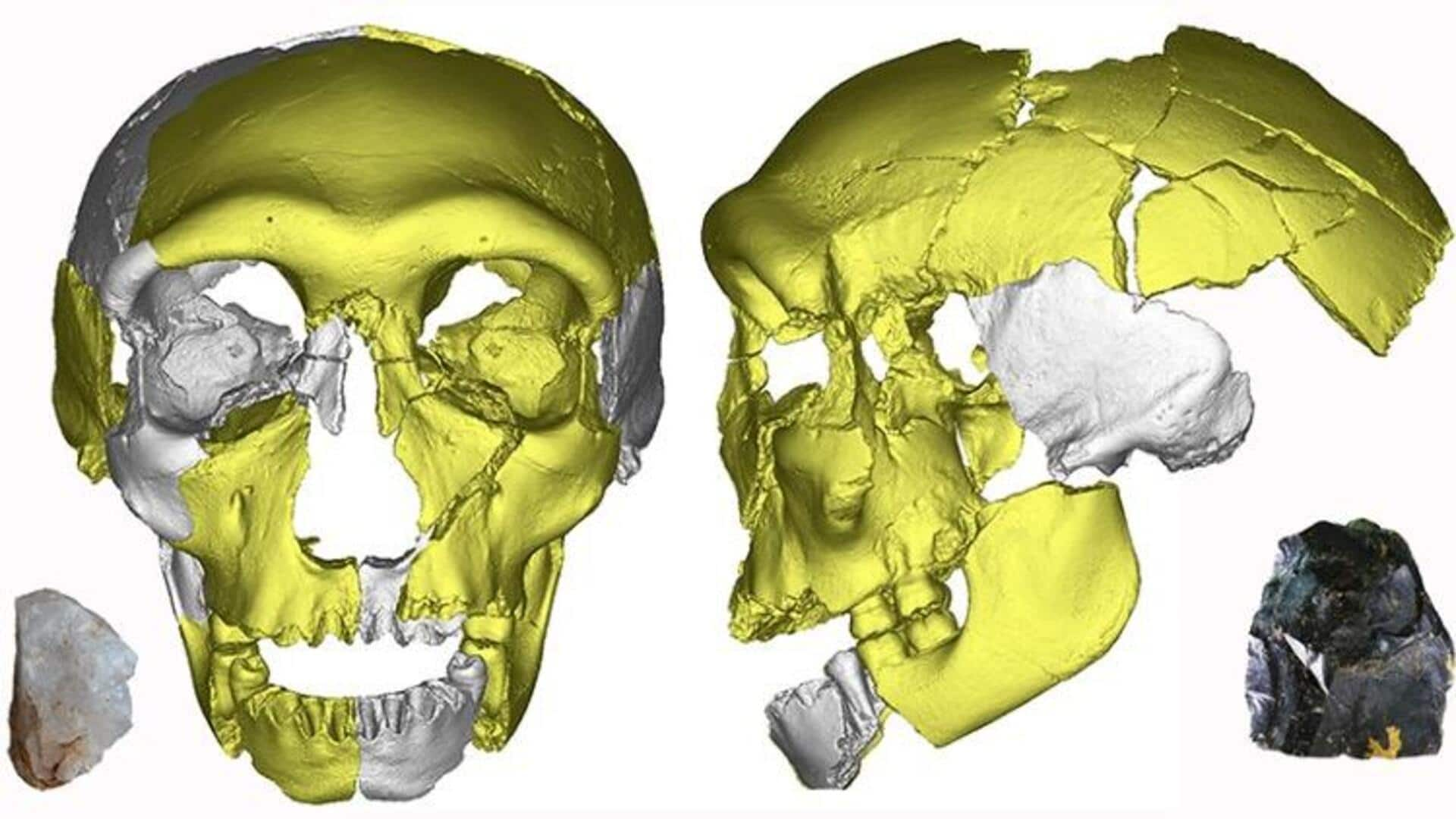
This 300,000-year-old fossil may represent new human family tree branch
What's the story
Scientists have discovered a 300,000-year-old fossilized jawbone in a cave in eastern China, which could represent a new branch of the human family tree. Interestingly, the specimen displays a mix of both ancient and modern features. It deepens the mystery of which ancient human species inhabited the region during the Middle to Late Pleistocene period, which lasted almost 800,000 years.
Details
The mandible lacks a true chin, like the Homo sapiens
The mandible was discovered in a region called Hualongdong, in eastern China, and was found to exhibit both modern and archaic features. The bone along the jawline is thick, a feature similar to early human species like Homo erectus. It also lacks a true chin, a key characteristic of Homo sapiens. However, the side of the mandible that attaches to the upper jaw is thinner than those of ancient hominins and more reminiscent of that of modern humans.
Findings
Possible ancestor link to early Homo Sapiens
The Hualongdong people could represent a previously unknown ancestor or close relative of early Homo sapiens, says Xiujie Wu, a palaeoanthropologist who was part of the team. The combination of ancient and modern features in the Hualongdong mandible is similar to those of remains found during the early 2000s at the Jebel Irhoud archaeological site in Morocco. The Jebel Irhoud remains are thought to belong to one of the earliest members of the evolutionary lineage that includes Homo sapiens.
Insights
Deciphering East Asia's Pleistocene human lineage
"More fossils and studies are necessary to understand [the Hualongdong people's] precise position in the human family tree," said Martinón-Torres, a team member. She claimed ancient proteins extracted from bones could shed further light on how the Hualongdong people are related to modern humans, as well as to more archaic species. At the time of cave excavations in China, researchers uncovered the remains of 16 individuals. Many of these remains were found to belong to the skull of a 12-to-13-year-old.
Information
'The picture of human occupation in East Asia is confusing'
The picture of human occupation in East Asia during the Pleistocene is a confusing one, says Yameng Zhang, from Shandong University. It's unclear whether any of the numerous species of archaic hominin that inhabited East Asia during Middle Pleistocene could be ancestors of modern humans.